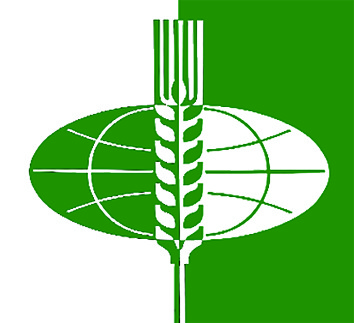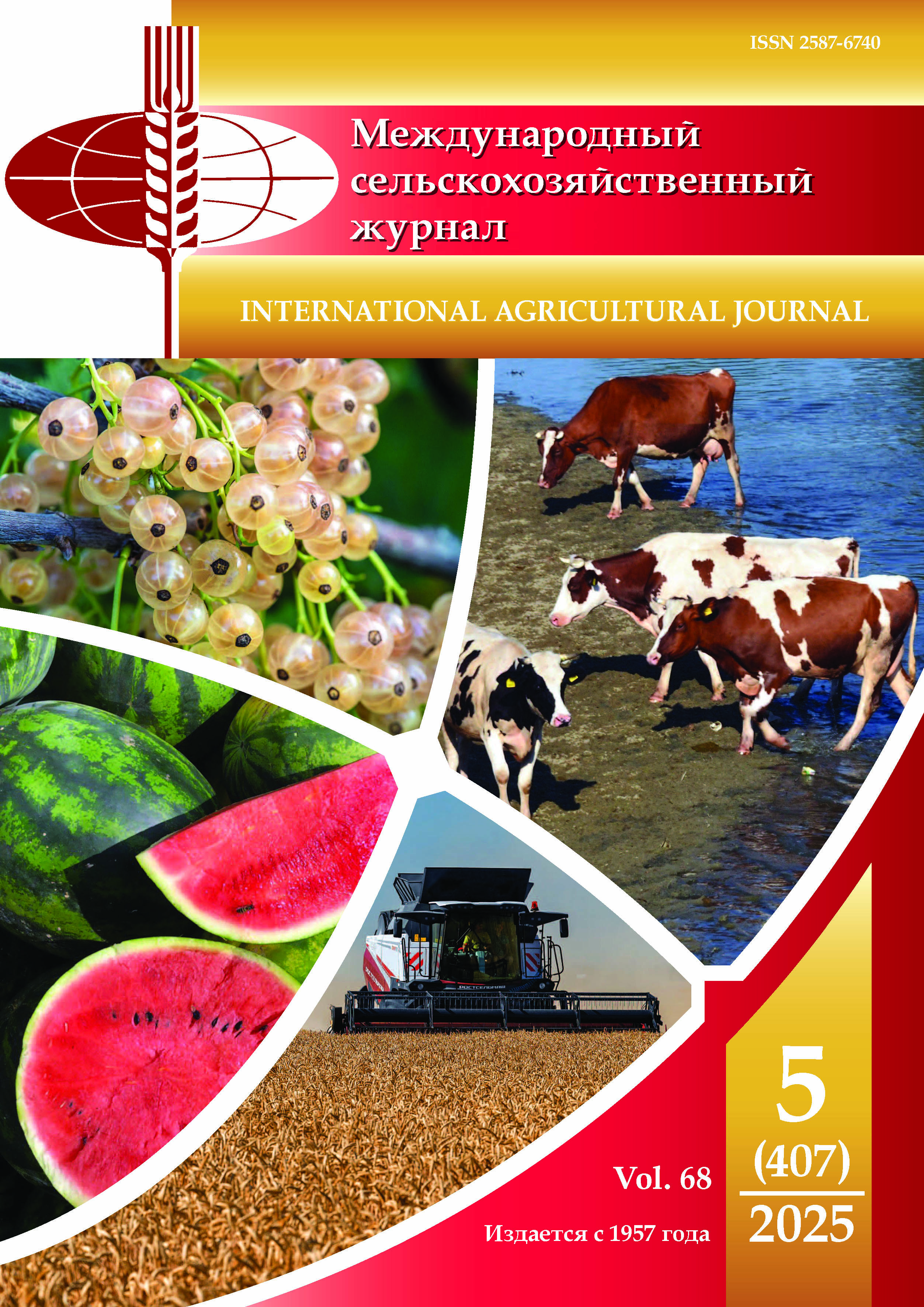UDC 339.54.012.435
UDC 338.001.36
In the context of achieving technological sovereignty, a key aspect of assessing an industries innovation potential is not only its resource availability and competitiveness but also its capacity for innovation diffusion. This study analyzes innovation activity in Russian agriculture based on statistical data (2017-2023). The assessment of innovation activity in agriculture revealed a concentration of innovations in narrow segments of the argo-industrial complex (AIC). Specifically, over 90% of innovative output is generated in crop farming (annual crops) and livestock farming, while auxiliary sectors (seedlings, perennial crops) remain at marginal levels (1-2%). The analysis identified cyclical dynamics in innovation: the share of crop farming increased from 35.4% (2017) to 55.5% (2019) but was later overtaken by livestock farming, which dominated in the Central Federal District (CFD, 43.1%), Volga Federal District (VFD, 22.1%), and Southern Federal (SFD, 22.1%). In contrast the Far Eastern (FEFD) and North Caucasian Federal Districts (NCFD) show minimal indicators (<1%), indicating weak technology diffusion. Some regions (VFD, SFD) exhibit sharp fluctuations in innovation activity, reflecting instability in innovation processes. The analysis also highlights a slow rate of technological renewal, as the share of «recent» innovations (implemented within the last three years) declined from 71.3% (2019) to 61.7% (2023). To increase the speed and depth of innovation penetration, mechanisms must be introduced to promote more balanced distribution of innovation activity across regions and sectors. This could include government support, incentives for private investment, and measures to facilitate interregional technology transfer.
technological sovereignty, innovation diffusion, agriculture, innovation potential, territorial distribution, innovation dynamics, innovation activity, technology renewal
1. Yurevich M. A. Tehnologicheskiy suverenitet Rossii: ponyatie, izmerenie, vozmozhnost' dostizheniya // Voprosy teoreticheskoy ekonomiki. 2023. № 4(21). S. 7-21. DOI:https://doi.org/10.52342/2587-7666VTE_2023_4_7_21. EDN UAYDKN
2. Tatuev A. A. Innovacionnyy potencial tverdobiotoplivnoy otrasli v razvitii regional'nyh ekonomicheskih sistem / A. A. Tatuev, M. A. Kerefov, S. A. Sklyarenko // Gosudarstvennoe i municipal'noe upravlenie. Uchenye zapiski. 2019. № 3. S. 193-197. DOI:https://doi.org/10.22394/2079-1690-2019-1-3-193-197. EDN GVPQOH.
3. Efryushkina E. V. Sistemno-integrativnyy podhod v upravlenii innovacionnym potencialom rossiyskoy biotehnologicheskoy otrasli / E. V. Efryushkina, M. V. Krasnostanova // Sovremennye tehnologii upravleniya. 2023. № 4(104). EDN MZWICM.
4. Motova M. A. Potencial innovacionnogo razvitiya otrasley rossiyskoy ekonomiki // Rossiya: tendencii i perspektivy razvitiya. Ezhegodnik. Vypusk 12, chast' 3. Moskva: Institut nauchnoy informacii po obschestvennym naukam RAN, 2017. S. 366-371. EDN YOIQNF.
5. K'yandskiy A. M. Teoriya diffuzii innovaciy Rodzhersa i ee primenenie v usloviyah koncepcii industriya 4.0. Sovremennye problemy menedzhmenta: Materialy XVI Vserossiyskoy nauchno-prakticheskoy konferencii studentov, aspirantov i molodyh uchenyh. Sbornik nauchnyh trudov, Sankt-Peterburg, 21 aprelya 2022 goda. Sankt-Peterburg: Sankt-Peterburgskiy gosudarstvennyy elektrotehnicheskiy universitet im. V.I. Ul'yanova (Lenina), 2022. S. 210-213. EDN JGDNWR.
6. Teoriya diffuzii innovaciy [Elektronnyy resurs]. Rezhim dostupa: http://buklib.net/books/31167/ (data obrascheniya: 23.02.2022).
7. Zemtsov S. An assessment of regional innovation system efficiency in Russia: the application of the DEA approach / S. Zemtsov, M. Kotsemir // Scientometrics. 2019. Vol. 120, No. 2. P. 375-404. DOI:https://doi.org/10.1007/s11192-019-03130-y. EDN QTJQFR.
8. Vainshtok A. L. Aspects of technological sovereignty of fuel and energy companies // Innovation & Investment. 2023. No. 5. P. 444-447. EDN NOVNXJ.
9. Kotlyarov I. D. Setevoe sotrudnichestvo v APK kak instrument razvitiya eksporta // Nikonovskie chteniya. 2017. № 22. S. 301-303.
10. Al'gina M. V. Innovacionnyy potencial ekonomicheskoy sistemy i ego ocenka / M. V. Al'gina, V. A. Bodnar // Sovremennye tehnologii upravleniya. 2011. № 1(1). S. 1-11. EDN OXEPZD.
11. Analiz innovacionnogo razvitiya provinciy KNR na osnove chetyrehkomponentnoy regressionnoy modeli / Yu. Ven', O. P. Sanzhina, A. B. Ayurzanayn, O. A. Darmaeva // Ekonomicheskie nauki. 2021. № 204. S. 9-21. DOI:https://doi.org/10.14451/1.204.9. EDN HJBCYB.
12. Shkarupeta E. V. Opredelenie roli i faktorov effektivnosti sistemoobrazuyuschego innovacionno aktivnogo klastera kak sub'ekta povysheniya ekonomicheskoy bezopasnosti depressivnogo regiona / E. V. Shkarupeta, A. V. Babkin // Ustoychivoe razvitie promyshlennogo regiona - konkurentosposobnost' i razvitie social'no-ekonomicheskih sistem : Sbornik annotaciy dokladov Tret'ego Ural'skogo nauchnogo foruma «Ustoychivoe razvitie promyshlennogo regiona» i prohodyaschey v ramkah foruma VII Mezhdunarodnoy nauchnoy konferencii «Konkurentosposobnost' i razvitie social'noekonomicheskih sistem» pamyati akademika A. I. Tatarkina, Chelyabinsk, 20–21 fevralya 2024 goda. Chelyabinsk: Chelyabinskiy gosudarstvennyy universitet, 2024. S. 116-117.
13. Doklad 2024 g. o polozhenii v oblasti intellektual'noy sobstvennosti v mire – Innovacionnaya politika kak instrument razvitiya. [Elektronnyy resurs]. Rezhim dostupa: http://www.wipo.int/publications/ru/details.jsp?id=4724&plang=RU (data obrascheniya: 12.04.2025).
14. Doklad 2019 g. o polozhenii v oblasti intellektual'noy sobstvennosti v mire – Geografiya innovaciy: lokal'nye centry i global'nye seti [Elektronnyy resurs]. Rezhim dostupa: www.wipo.int/publications/ru/details.jsp?id=4467 (data obrascheniya: 23.02.2025).









